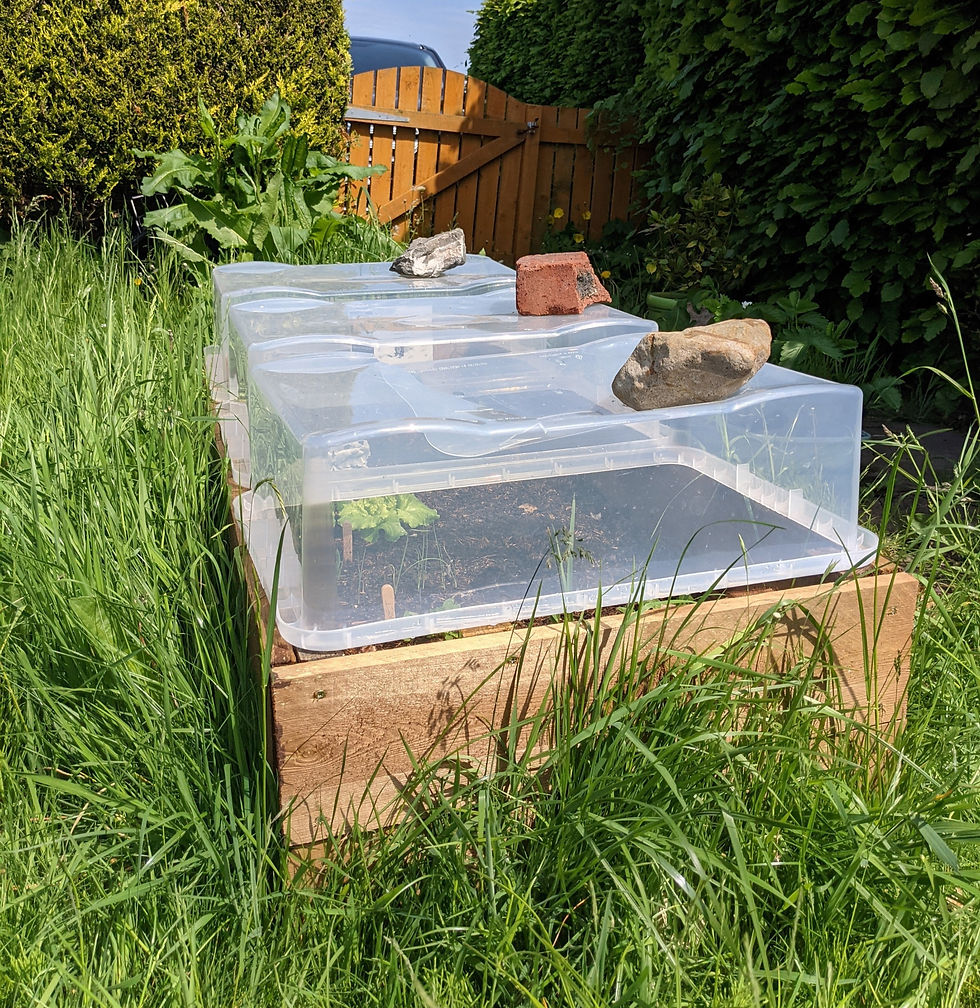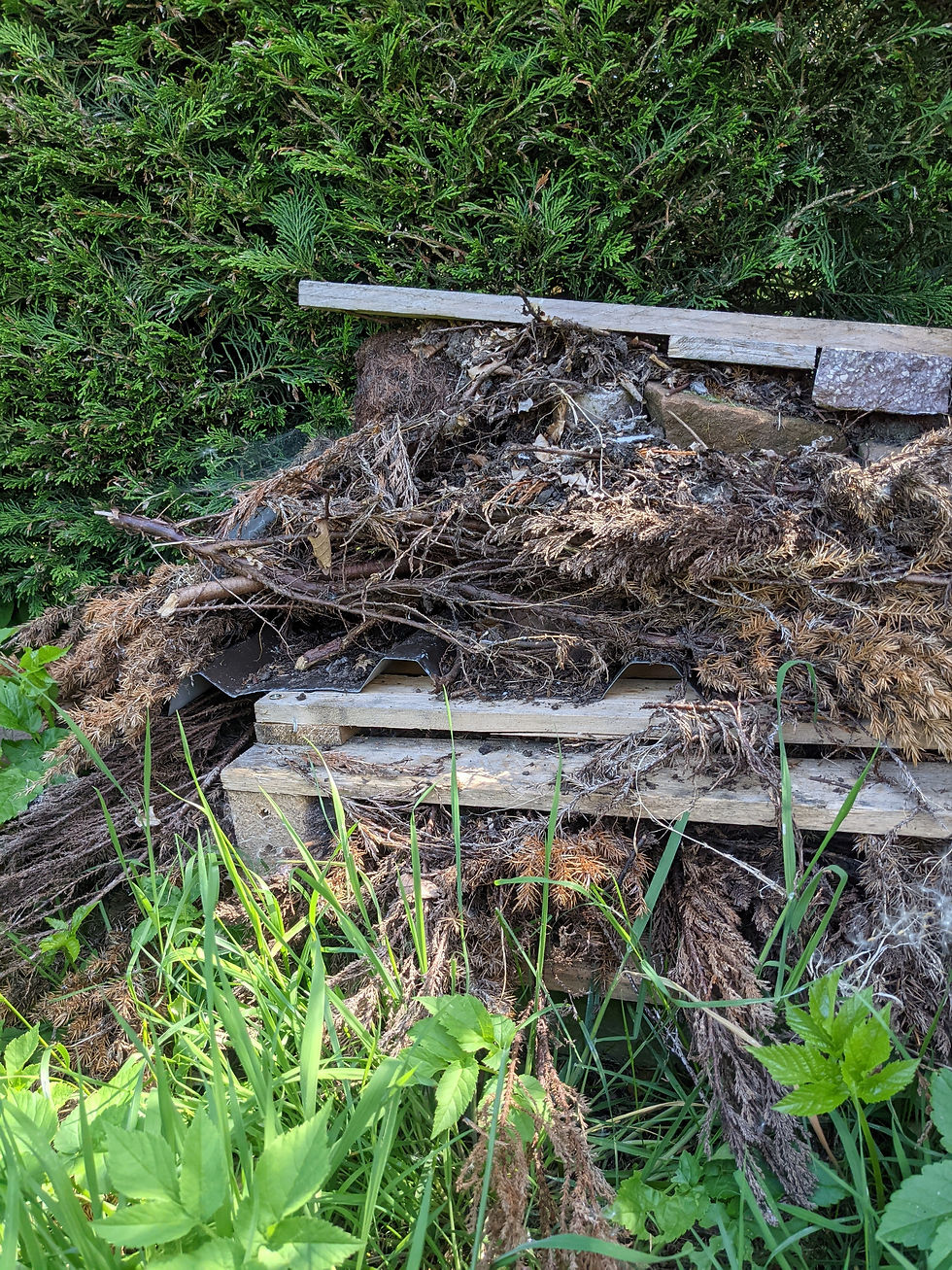The Humble Garden
- Carys Mainprize
- Jun 5, 2021
- 3 min read
What gardens and parks have marked your life?
I ask because today – World Environment Day – I want to take a look not at a peatland environment but at a garden. It is Garden Wildlife Week and National Children’s Gardening Week, but also, the more I think about gardens, the more I realise their huge impact on me – certainly more than any other environment has (peatland and coastlines would be a close second and third).
Gardens are ubiquitous in many areas, but entirely absent in others. Still, I’ve always been lucky, and even when I lived in built up England we had an uncommonly large garden which housed chickens, two rabbits, a pond, a treehouse, and vegetable gardens. At that point the garden was just a stage for imaginary games, but it was a lush green one, at least.
And my favourite place in the world is Christchuch park in Ipswich – a fantastic space, partly in the centre of the large town, with cheeky grey squirrels who have learnt to rub their bellies to get fed. There’s also Mabel the owl, a celebrity, who is reported on often for the Friends of the Park newsletter, and a fantastic Tudor mansion open as a museum. My grandmother lives not even a minute away from one of the entrances, and hence became known as Grandma Park to this day.
And now I have my very first garden.

It is an L shape, which catches the sun from late morning onwards, sheltered by hedges of yew, beech, and other shrubs. It overlooks a field, often with horses that watch me as much as I watch them, and I haven’t mown it a single time in 2021.
This is partly because I don’t own a lawnmower and, frugal as ever, refuse to buy one. But it is also because I have no fear of a messy garden. Let it grow all of the so-called weeds, and I will watch the bees and butterflies!

Despite this – and despite the grass quickly becoming knee high in areas – it is still functional. It holds a makeshift compost pile, a raised bed with kale, lettuce, rocket, spring onions, and parsley. It has two small patches ringed with rocks and filled with peat-free compost – one a flower bed, the other for herbs. There is a small stone square where the garden chairs are safe from the invading weeds, a washing line, a bug hotel in one corner where last year’s leaves have been pushed, and – at a count – at least 18 species of plants.
Buttercup, dandelion, vetch, doc, goose grass, cuckoo flower – I name them silently each time I walk out into the garden. And I watch the bees and hoverflies alight on the dandelions, and see the spider scurry off the raised bed each day as I water it.
Many gardens are isolated islands. Concreted, gravelled, misted often with pesticide or herbicide. Not this one.

How can we talk about #generationrestoration, about reimagining, recreating, and restoring, if the environments closest to us (physically and in many other ways) are always being made tidy?
What an awful thing, a tidy garden! No unmown patch in the corner, no refuge for the necessary bugs. Fenced off from neighbours and hedgehogs alike. A garden can be functional and nature friendly (a nature-based solution under our direct, individual control) but so often it is only the former.

Just yesterday, I made kale and coriander pesto. The other day I had chives, coriander, and kale on my salad. Soon I will be able to add lettuce leaves to my sandwiches, and I often take sprigs of thyme for my one pot dinners. I sit outside most days and enjoy the sun, unbothered by bees and wasps. My washing gets dried outside, always, and I can compost food scraps.
Perfectly functional! Messy, yes – weeds galore, yes! But it answers everything I’d ask of a garden, and in turn, it hopefully answers most of what nature asks too.
This garden shall surely mark my life like many others before it. Next season I’ll add another raised bed, and slowly learn about permaculture. I’d like to keep chickens one day – but not in this garden, my next.
It is great to journey through all the environments, like World Environment Day asks. The website takes you through peatlands, savannah, seas, mountains – but not a garden.
And yet I think that should be the starting place for any talk of restoration, because individuals who ask how they can make a difference (when it is the 1% who pollute, they argue) still have drives and concrete yards and fenced in islands and rarely, if ever, a messy garden.

Comments